Ear Deformities
Ear Deformities Are The Most Frequently Overlooked Infant Deformity Remarkably, statistical data show that infant ear deformities occur between 20% and 35% of all births and 70% will stay the same, or worsen, without EarWell, the safe, painless, non-surgical treatment that corrects ear deformities.
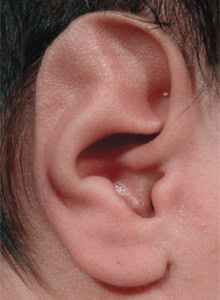
Stahl’s Ear
Identified by a pointed appearance at the top of the ear(s). Also called pointed ear, elf ear, Vulcan ear or Spock ear, in reference to the Vulcan character, Spock, from the Star Trek TV series.
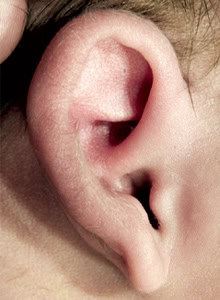
Protruding Ear
One of the most common ear deformities, affecting about 5% of the global population. Ears are defined as protruding if they extend more than 2 cm.(about ¾”) from the side of the head.
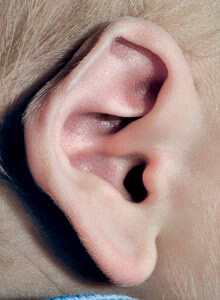
Helical Rim
This ear deformity is identified by compression or flattening anywhere along the external edge (rim) of the upper ear, giving the outer ear a folded “C” shape.

Cryptotia
In this deformity, the upper portion of the ear cartilage is partially buried beneath the skin on the side of the head. Also called hidden ear, buried ear or pocket ear.
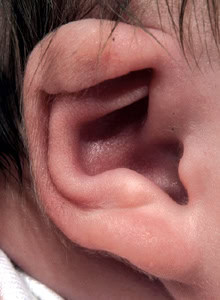
Lidding or Lop Ear
Lidding is a folding over of the upper portion of the ear(s). Unlike other ear deformities that affect specific areas of the ear(s), lidding can affect large parts of the ear’s outer structure.
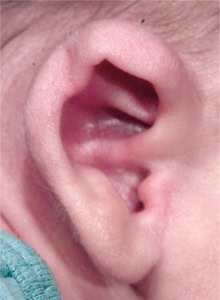
Cup or Constricted Ear
Characterized by constriction of the upper third of the ear (called the upper helical rim) resulting in the ear appearing wrinkled, rolled or folded down. Sometimes confused with protruding ears.
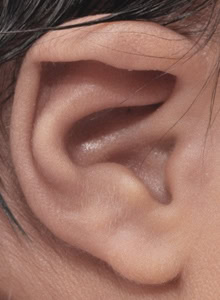
Conchal Crus Ear
Identified by an abnormal fold or “bar” of cartilage that crosses through the center of the hollow portion of the ear, dividing the ear in half.
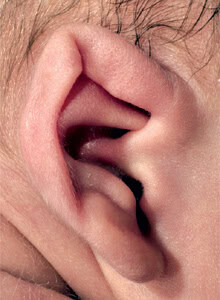
Mixed Ear
A combination of mixed external ear deformities affecting the shape of an infant’s ears, including prominent/protruding ears to include other shape abnormalities in the outer ear(s).
